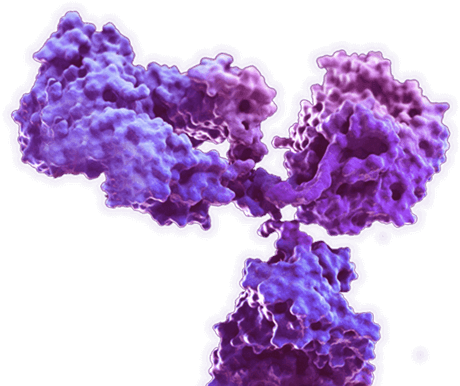AibGenesis™ Mouse Anti-PSBA Antibody (CBMOAB-39408FYC)
Cat: CBMOAB-39408FYC

Certificate of Analysis Lookup
To download a Certificate of Analysis, please enter a lot number in the search box below. Note: Certificate of Analysis not available for kit components.
Lot Number
To download a Certificate of Analysis, please enter a lot number in the search box below. Note: Certificate of Analysis not available for kit components.
Lot Number
- Product List
- Specifications
- Application Information
- Target
- Reference
- Relate Reference Data
| Sub Cat | Clonality | Species Reactivity | Application | Clone | Conjugate | Size | |
| CBMOAB-39408FYC | Monoclonal | WB, ELISA | MO39408FC | 100 µg | |||
| CBMOAB-88923FYB | Monoclonal | Rice (Oryza) | WB, ELISA | MO88923FYB | 100 µg | ||
| MO-AB-00507W | Monoclonal | Barrel medic (Medicago truncatula) | WB, ELISA | MO00507W | 100 µg | ||
| MO-AB-36419W | Monoclonal | French-bean | WB, ELISA | MO36419W | 100 µg | ||
| MO-AB-39431W | Monoclonal | Grape (Vitis vinifera) | WB, ELISA | MO39431W | 100 µg | ||
| MO-AB-30486H | Monoclonal | Sugar beet (Beta vulgaris) | WB, ELISA | MO30486C | 100 µg | ||
| MO-AB-35075H | Monoclonal | Tomato (Lycopersicon esculentum) | WB, ELISA | MO35075C | 100 µg | ||
| MO-AB-01906L | Monoclonal | Bromus (Bromus vulgaris) | WB, ELISA | MO01906L | 100 µg | ||
| MO-DKB-0418RA | Polyclonal | WB | 50 µL | ||||
| MO-DKB-0419RA | Polyclonal | WB | 50 µL | ||||
| MO-DKB-01758W | Polyclonal | A. thaliana (Arabidopsis thaliana), Synechocystis sp. PCC 6803 | WB | 100 µg | |||
| MO-DKB-01793W | Polyclonal | A. thaliana (Arabidopsis thaliana), Soybean (Glycine max), Maize (Zea mays), Rice (Oryza sativa), Barley (Hordeum vulgare) | WB | 100 µg | |||
| MO-DKB-01872W | Polyclonal | A. thaliana (Arabidopsis thaliana) | WB | 100 µg | |||
| MOFAB-298W | Arabidopsis, Rice | WB | 100 µg |
Specifications
| Host species | Mouse (Mus musculus) |
| Species Reactivity | A. thaliana (Arabidopsis thaliana), Soybean (Glycine max), Maize (Zea mays), Rice (Oryza sativa), Barley (Hordeum vulgare), Synechocystis sp. PCC 6803, A. thaliana (Arabidopsis thaliana); H. vulgare (Hordeum vulgare); C. reinhardtii (Chlamydomonas reinhardtii); C. vulgaris (Chlorella vulgaris); Synechococcus sp. PCC7942, A. thaliana (Arabidopsis thaliana); H. vulgare (Hordeum vulgare); M. truncatula (Medicago truncatula); N. oleoabundans (Neochloris oleoabundans); P. patens (Physcomitrella patens); P. sativum (Pisum sativum); S. vulgaris (Silene vulgaris); Spinach (Spinacia oleracea), Arabidopsis, Rice, Barrel medic (Medicago truncatula), Bromus (Bromus vulgaris), French-bean, Grape (Vitis vinifera), Rice (Oryza), Sugar beet (Beta vulgaris), Tomato (Lycopersicon esculentum) |
| Clone | MO39408FC |
| Specificity | This antibody binds to Arabidopsis PSBA. |
| Format | Liquid or Lyophilized |
| Storage | Store at 4°C: short-term (1-2weeks) Store at -20°C: long-term and future use |
| Purity | > 90% was determined by SDS-PAGE |
| Purification | Purified with Protein A or G affinity chromatography |
| Cellular Localization | Chloroplast; Other locations |
Application Information
| Application | WB, ELISA |
| Application Notes | ELISA: 1:1000-1:3000 Other applications are to be developed. The optimal dilution should be determined by the end user. |
Target
| Product Overview | Mouse Anti-Arabidopsis PSBA Antibody is a mouse antibody against PSBA. It can be used for PSBA detection in Western Blot, Enzyme-Linked Immunosorbent Assay. |
| Alternative Names | Photosystem II protein D1; PSII D1 protein; EC 1.10.3.9; Photosystem II Q(B) protein; psbA; AtCg00020 |
| UniProt ID | P83755 |
| Protein Refseq | The length of the protein is 353 amino acids long. The sequence is show below: MTAILERRESESLWGRFCNWITSTENRLYIGWFGVLMIPTLLTATSVFIIAFIAAPPVDIDGIREPVSGSLLYGNNIISGAIIPTSAAIGLHFYPIWEAASVDEWLYNGGPYELIVLHFLLGVACYMGREWELSFRLGMRPWIAVAYSAPVAAATAVFLIYPIGQGSFSDGMPLGISGTFNFMIVFQAEHNILMHPFHMLGVAGVFGGSLFSAMHGSLVTSSLIRETTENESANEGYRFGQEEETYNIVAAHGYFGRLIFQYASFNNSRSLHFFLAAWPVVGIWFTALGISTMAFNLNGFNFNQSVVDSQGRVINTWADIINRANLGMEVMHERNAHNFPLDLAAVEAPSTNG. |
Reference
| Reference | Cai, W., Ji, D., Peng, L., Guo, J., Ma, J., Zou, M., ... & Zhang, L. (2009). LPA66 is required for editing psbF chloroplast transcripts in Arabidopsis. Plant Physiology, 150(3), 1260-1271. |
Relate Reference Data

Figure 1 RNA transcripts and editing analysis in Ipa66 mutants. RNA gel blot hybridization with total RNA from leaves of wild-type (WT) and Ipa66-1 mutant plants. Ten micrograms of total leaf RNA per well from 5-week-old wild-type and Ipa66-1 plants was loaded per well. The probes for the genes psbA, psbB, psbC, psbDf psbEFLJ, psbKI, psaA, and petA are indicated to the left. rRNA was visualized by staining with ethidium bromide as an equal loading control.

For Research Use Only | Not For Clinical Use.
Online Inquiry

